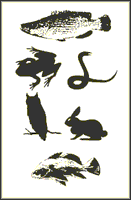Nebraska Cooperative Fish and Wildlife Research Unit

Nebraska Cooperative Fish and Wildlife Research Unit: Staff Publications
Date of this Version
2010
Citation
Jezierski, C., R. Loehman, and A. Schramm. 2010. Understanding the science of climate change: Talking points - impacts to Alaska Boreal and Arctic. Natural Resource Report NPS/NRPC/NRR - 2010/224.
Abstract
Alaska is a huge state spanning 375 million acres and occupying nearly one-fifth of the land area of the contiguous 48 states. More than half of the coastline of the entire United States is in Alaska. Due to the great size and geographically diverse nature of Alaska, two bioregional documents were produced: “Boreal and Arctic” and “Alaska Maritime and Transitional.” In Alaska, the vast majority of the land is public; with approximately 222 million acres (approximately 60%) designated federal lands and another 90 million acres (approximately 24%) in state ownership. There are 17 National Park Service (NPS) areas in Alaska covering over 54 million acres; this represents two-thirds of the land in the entire National Park system. Wrangell-St. Elias is the largest NPS unit at over 13 million acres in size. There are 16 National Wildlife Refuges in Alaska totaling over 76 million acres, representing approximately 80% of the entire National Wildlife Refuge system. The two national forests in Alaska encompass nearly 22 million acres; Tongass National Forest is the largest United States Forest Service unit, with nearly 17 million acres. The Bureau of Land Management manages almost 78 million acres in Alaska.
Climate changes in the Boreal and Arctic bioregion include increased mean, minimum, and maximum annual and seasonal temperatures, especially in the spring and winter, resulting in earlier spring budding, an increase in the length of the growing season, and an increase in the annual numbers of snow-free and frost-free days. Hotter, drier summers contribute to drought stress in the boreal forest, leading to reduced tree growth, changes in rates of carbon sequestration, and increased disturbance from fires and insect outbreaks. In addition, shrub expansion into Arctic tundra is altering forage availability for caribou and other wildlife. Additional climate change impacts include changes to regional hydrology, including decreased spatial extent of glaciers and sea ice, and increased sea surface temperatures. Secondary effects include shifts in plankton availability in the Bering Sea, which in turn is impacting the distribution and population dynamics of fish, seabird, and wildlife species.


Comments
US government work.